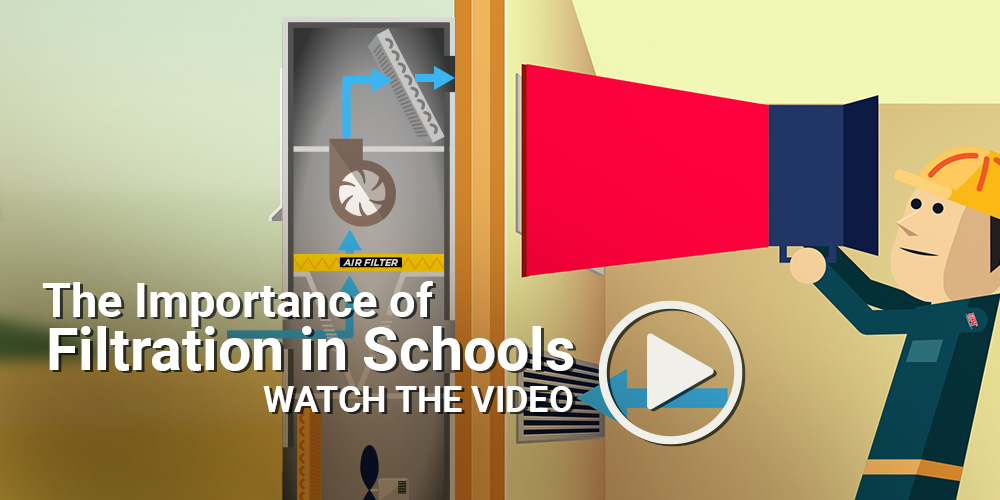Watch UC Davis’ Western Cooling Efficiency Center’s New 8 Minute Video on the Importance of Filtration in Schools
Ventilation means providing outdoor air into classrooms. Ventilation removes indoor air pollutants from buildings by bringing in outside air and exhausting room air. This dilutes the concentration of indoor pollutants.
Ventilation works together with filtration to improve indoor air quality. Filtration can capture and reduce exposure to some indoor and outdoor pollutants.
Indoor pollutants include volatile organic compounds like formaldehyde that can off-gas from building materials, finishes, furniture, and cleaning products. Indoor pollutants also include respiratory aerosols that are exhaled by building occupants. Reducing the concentration of respiratory aerosols inside buildings is important to reduce the spread of airborne infectious disease, including COVID-19.
Outdoor pollutants include fine particulate matter less than 2.5 microns in diameter, also called PM 2.5. This particulate matter can penetrate deep into the lungs when inhaled. PM 2.5 comes from a variety of sources including fires, power plants, and vehicle exhaust.
To find out more information visit the UC Davis Western Cooling Efficiency Center’s website HERE.
